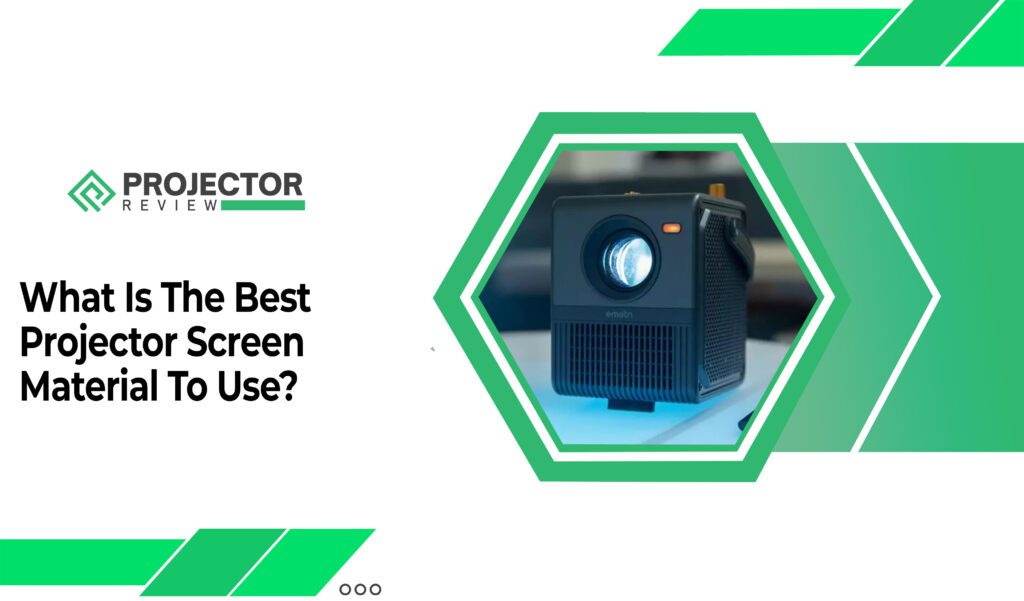In today’s fast-paced world, visual presentations have become an integral part of our personal and professional lives which nobody can neglect. Whether it’s a business meeting, an educational lecture, or an entertaining movie night at home, projectors play a pivotal role in delivering captivating visual experiences.
The importance of how projectors work lies in their ability to transform mundane data and information into vibrant, larger-than-life images, captivating the audience’s attention and leaving a lasting impact.
These versatile devices have revolutionized the way we communicate and share ideas, offering an immersive and dynamic platform for presentations, training sessions, and multimedia entertainment.
One crucial aspect of a projector that significantly impacts its performance like its display level is its contrast ratio, which determines the difference between the brightest and darkest parts of an image.
Understanding the contrast ratio is essential for achieving optimal clarity, depth, and realism in projected visuals, making it a vital consideration for anyone seeking an exceptional viewing experience.
What is the Contrast Ratio in a Projector?
The contrast ratio in a projector is a critical specification that measures the difference between the brightest and darkest parts of an image it can produce. It is usually represented as a numerical value, such as 1000:1 or 10,000:1, indicating how many times brighter the brightest part of the image is compared to the darkest part to give you good results. It makes it easy, how to use a projector outside during the day.


A higher contrast ratio typically results in a more vibrant and dynamic image which is enough to amaze and focused as it allows the projector to display a wider range of colors and shades, creating a more realistic, clear, and immersive viewing experience. Dark scenes appear deeper and more detailed, while bright scenes retain their clarity and brilliance.
Why Contrast Ratio in a Projector Matter?
The contrast ratio in a projector matters because it directly impacts the image quality and visual experience during projection. Here’s why it is important:
Image Clarity
A higher contrast ratio means a more significant difference between the brightest and darkest parts of the image. This results in sharper and clearer visuals, allowing for better visibility of details and text.
Color Vibrancy
A projector with a higher contrast ratio can display a wider range of colors and shades, leading to more vibrant and lifelike images. Colors appear richer and more true-to-life.
Home Theater Experience
For home theater setups, a high contrast ratio is crucial as it enhances the cinematic experience, the way how to hang a projector screen, creating more captivating and engaging movie nights.
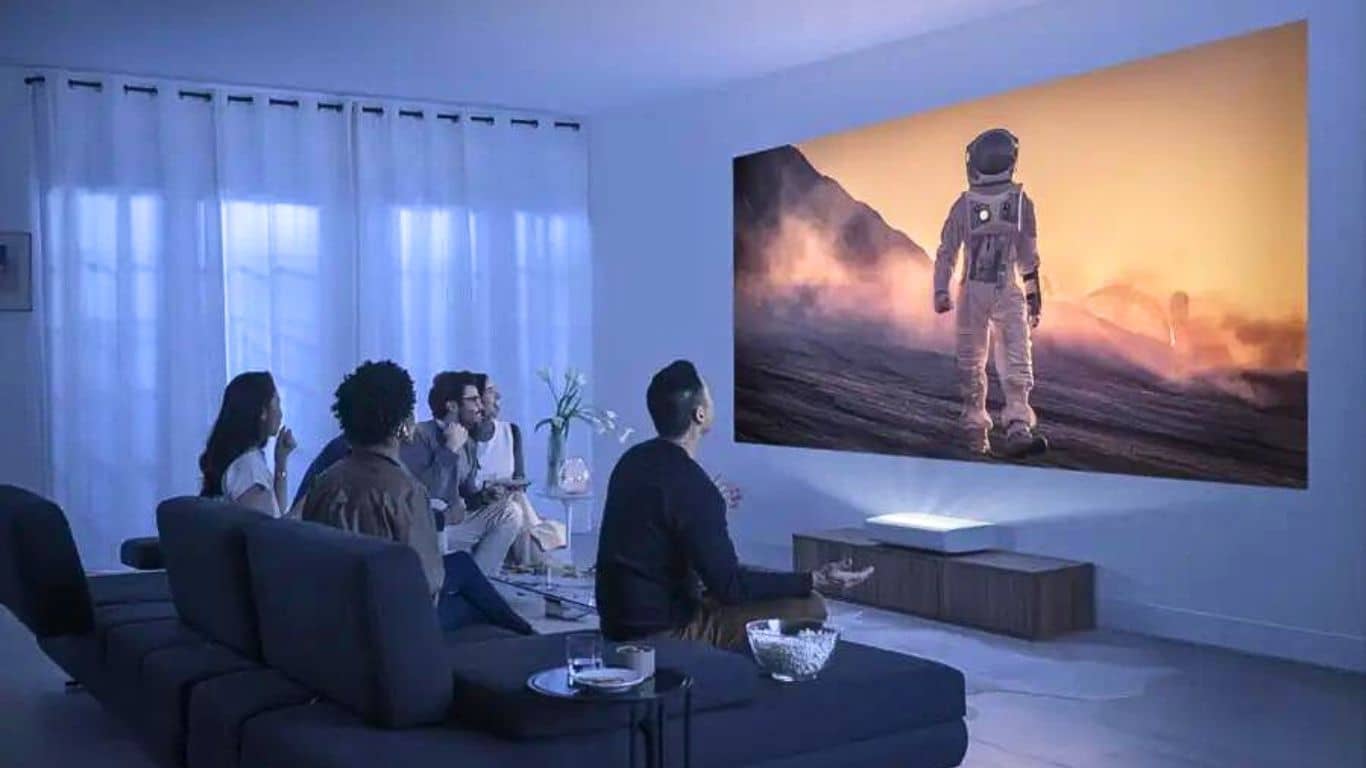

Visual Depth
High contrast ratios contribute to improved visual depth and realism, making the images appears more three-dimensional and immersive.
Dark Scene Performance
In dark or low-light scenes, a high contrast ratio ensures that black areas remain truly dark, preventing them from appearing washed out or grayish.
DLP Vs LCD Contrast Ratio
DLP (Digital Light Processing) and LCD (Liquid Crystal Display) are two distinct technologies used in projectors to display images of better quality. DLP vs. LCD projector technology has its characteristics, including how they handle contrast ratio:
DLP Projectors
DLP projectors utilize a DMD (Digital Micromirror Device) chip, which consists of thousands to millions of tiny mirrors that can tilt toward or away from the light source. These mirrors control the amount of light that reaches the screen, effectively modulating the brightness of each pixel.
Contrast Ratio in DLP Projectors
DLP projectors are well-known for their high contrast ratios, especially those using single-chip DLP technology. The fast response time of the DMD chip allows DLP projectors to achieve deep blacks and bright whites, resulting in excellent contrast ratios. Many DLP projectors boast contrast ratios of 10,000:1 or higher, providing rich and detailed images, particularly in dark rooms.
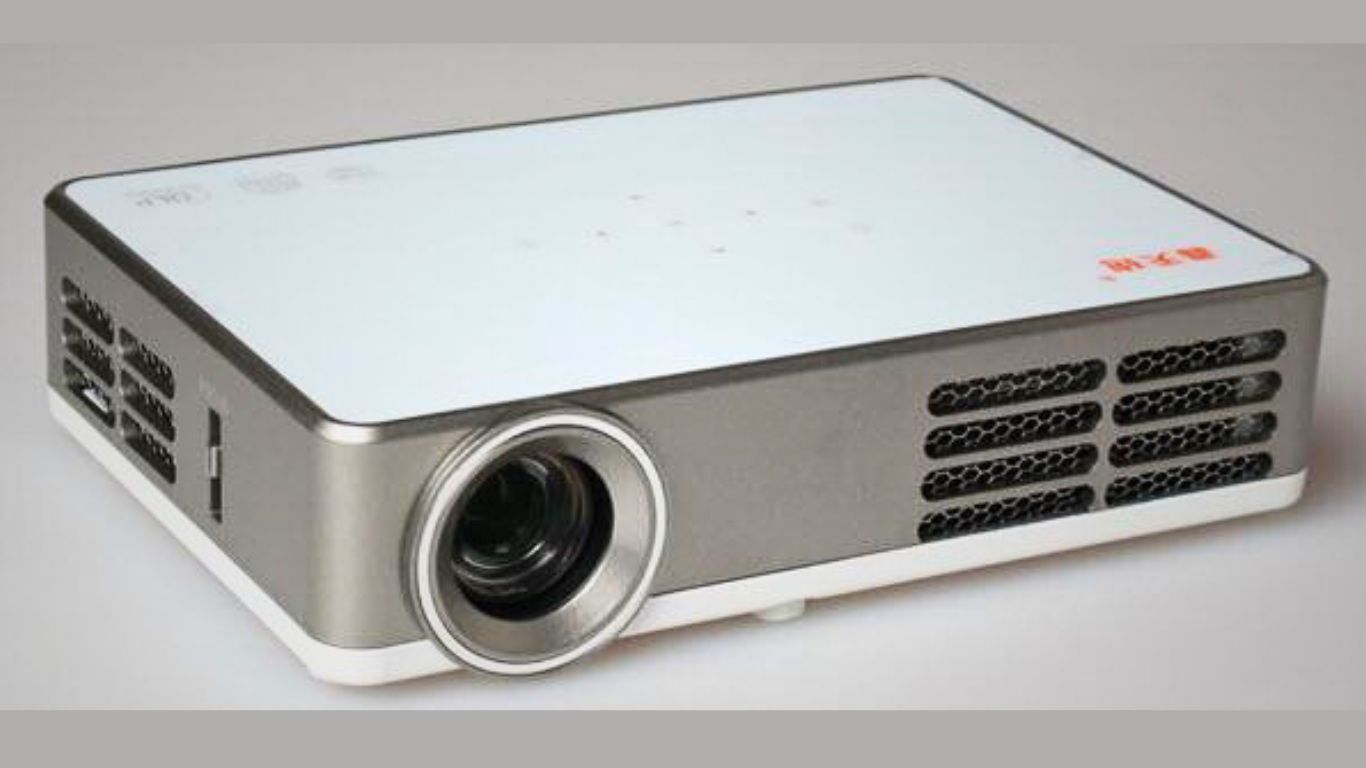

LCD Projectors
LCD projectors use liquid crystal panels to control the amount of light passing through each pixel. These panels act as color filters, and their combined output creates the full-color image displayed on the screen.
Contrast Ratio in LCD Projectors
LCD projectors traditionally have had slightly lower contrast ratios compared to DLP projectors. However, advancements in LCD technology as the best projector screen material have significantly improved contrast performance. LCD projectors now offer competitive contrast ratios, and some models even surpass DLP projectors in this aspect.
Contrast ratio 1000000:1 vs 1000:1
Let’s explore the implications of these two contrast ratios:
Contrast Ratio 1000000:1
A contrast ratio of 1,000,000:1 indicates that the brightest parts of the image are one million times brighter than the darkest parts to give a better view. Projectors with such high contrast ratios are usually equipped with advanced technologies like dynamic iris control, local dimming, or laser light sources.
These features allow for precise adjustments through ANSI Lumens Vs Lumens to the brightness levels of different parts of the image, resulting in stunning picture quality with deep blacks and excellent color rendition. Projectors with a contrast ratio in this range are ideal for home theater enthusiasts and professional AV setups, where image quality is of paramount importance, especially in darkened environments.
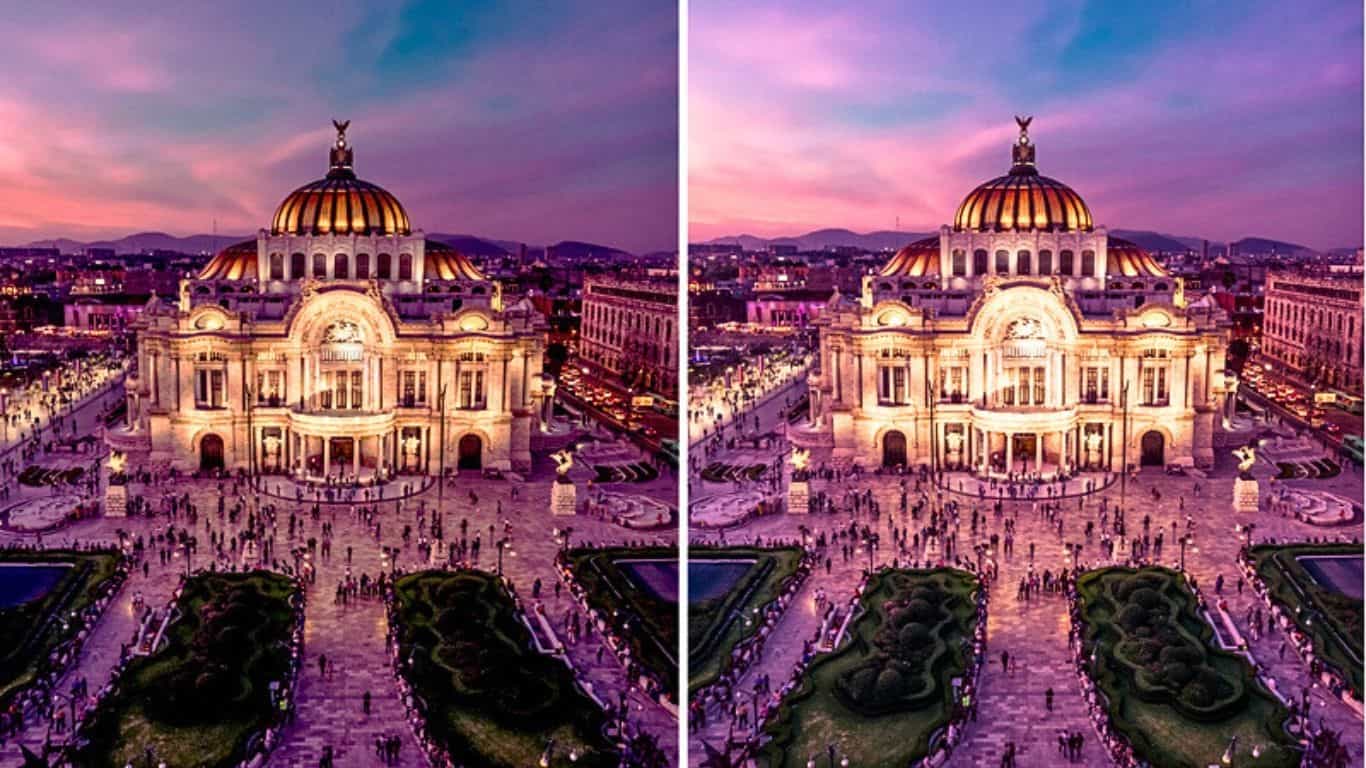

Contrast Ratio 1000:1
A contrast ratio of 1,000:1 indicates that the brightest parts of the image are only one thousand times brighter than the darkest parts. While a contrast ratio of 1000:1 is still considered acceptable and delivers decent image quality, it may not provide the same level of visual depth and realism as higher contrast ratios.
Projectors in this range are often more affordable and suitable for general multimedia presentations, classrooms, or small group gatherings where ambient light is controlled. However, in environments with significant ambient light or when aiming for a more immersive viewing experience, higher contrast ratios would be preferred.
What is a Good Contrast ratio?
A good contrast ratio for a projector depends on the intended use and the viewing environment. However, what is considered “good” can vary based on the following factors:
Home Theater
For dedicated home theater setups, a contrast ratio of 10,000:1 or higher is often preferred to achieve deep blacks and vibrant colors in a darkened room about how to install a projector screen in your home. Projectors with dynamic iris control or local dimming can provide exceptional image quality in these environments.
Business and Education
In well-lit meeting rooms or classrooms, a contrast ratio of 3,000:1 or higher is considered good for clear and legible presentations. This allows the projector to maintain image clarity even with some ambient light present.
Multi-Purpose Use
If the projector will be used in various settings, a contrast ratio between 5,000:1 and 10,000:1 should provide a good balance between image quality and versatility.


Projector Contrast Ratio vs. Lumens
Projector contrast ratio and lumens are two essential specifications that impact the overall image quality and performance of a projector. Let’s understand each of them:
- Contrast Ratio
As mentioned earlier, the contrast ratio measures the difference between the brightest and darkest parts of an image a projector can produce. It is represented as a ratio, such as 1000:1 or 10,000:1, indicating how many times brighter the brightest part is compared to the darkest part.
A higher contrast ratio typically results in better image quality, as it allows for more vibrant colors, deeper blacks, and improved visual depth. Projectors with high contrast ratios are well-suited for home theaters or environments where image quality is a top priority.
- Lumens
Lumens, on the other hand, measure the brightness output of a projector. It tells you how much light the projector can emit onto the screen or wall. Projector brightness is typically represented as “ANSI lumens,” and the higher the lumens, the brighter the image will appear.
Brightness is crucial for ensuring that the projected image is visible and clear, even in environments with ambient light. For darker rooms or home theater setups, best daylight projectors with lower lumens may be sufficient, while for well-lit rooms or large audiences, higher lumens are required to maintain image visibility.
The Relationship
Contrast ratio and lumens are both essential aspects of a projector, but they serve different purposes. While a high contrast ratio enhances image quality and visual impact, lumens ensure the projected image is bright enough to be seen clearly in various lighting conditions. It’s essential to strike a balance between these two factors based on your specific use case. You must know how many lumens are for outdoor projectors.
For example, in a home theater with controlled lighting, a projector with a high contrast ratio may be more important than extremely high lumens. On the other hand, for business presentations in well-lit rooms, a projector with higher lumens becomes crucial to maintain image visibility.
4k Projector Contrast Ratio
Projectors with higher contrast ratios tend to provide more stunning image quality, with deeper blacks and better color reproduction even shadows effect. These models typically incorporate advanced technologies like dynamic iris control, laser light sources, or local dimming to enhance contrast and improve overall picture performance.
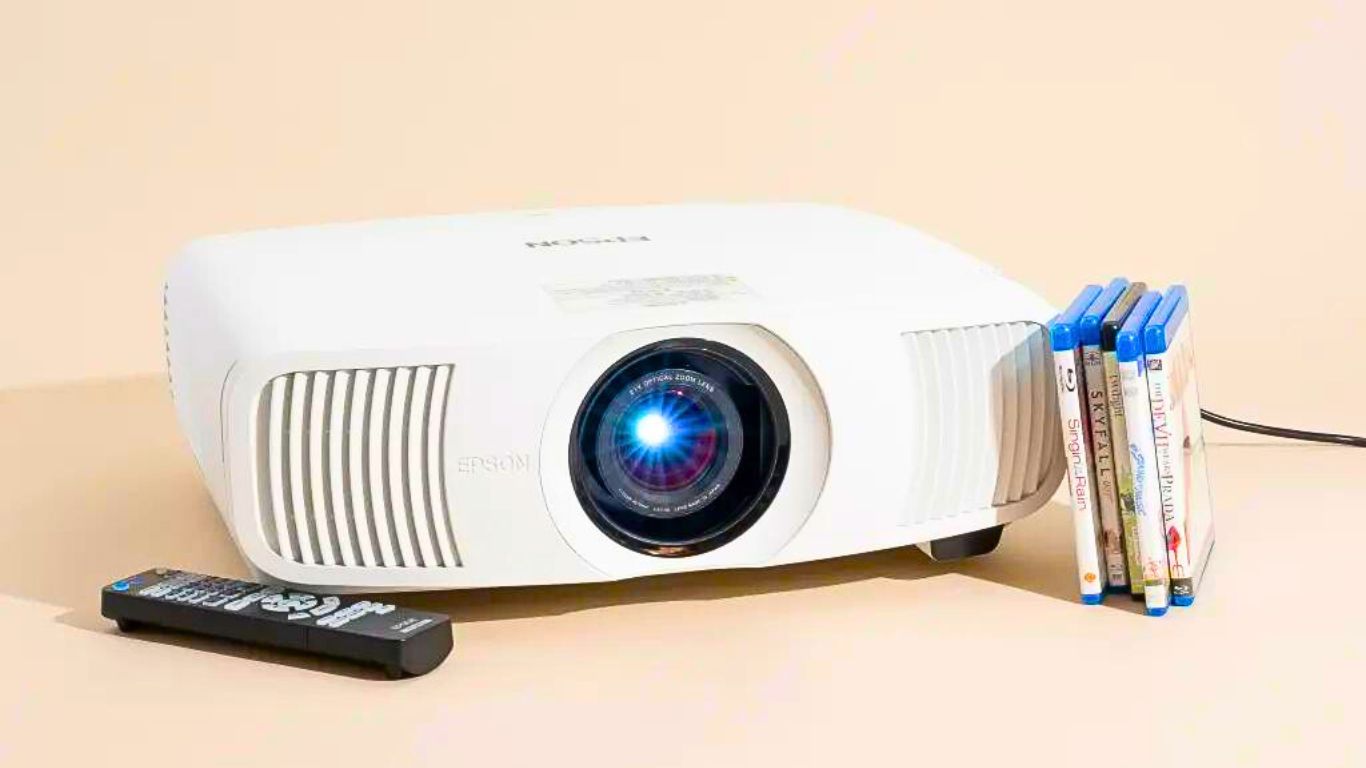

However, it’s essential to note that the contrast ratio is just one factor influencing the image quality of a projector. Other aspects such as color accuracy, brightness (lumens), resolution, and image processing capabilities also play a significant role in determining the projector’s overall performance. The advanced system helps, how to get sound from the projector to speakers.
As technology continuously advances, new 4K projector models may offer even better contrast ratios and other improvements in image quality.
Highest Contrast Ratio Projector
The specific models and rankings of projectors with the highest contrast ratios may have changed due to the continuous advancements in projector technology. Manufacturers are constantly improving their products, and new projectors with higher contrast ratios may have been released since then.
As of that time, some high-end projectors, especially those designed for home theater and professional AV applications, were offering contrast ratios of up to 1,000,000:1 or even higher. These projectors often utilize advanced technologies like dynamic iris control, laser light sources, or local dimming to achieve such exceptional contrast ratios.
To find the current best projector screen size models with the highest contrast ratios, I recommend checking the latest reviews, and professional projector comparison websites, or directly visiting the websites of leading projector manufacturers.
What is Contrast Ratio in a Projector – FAQs
Conclusion
The information shared empowers readers to make informed decisions when selecting a projector, considering factors such as intended use and viewing environment. You have to know how many watts a projector uses.
The expert analysis highlights the advantages of higher contrast ratios, including enhanced color vibrancy and realism, particularly in dark scenes. With a concise yet comprehensive approach, this article proves to be a helpful resource for individuals seeking a deeper understanding of contrast ratio and its importance in optimizing their projector experiences.
